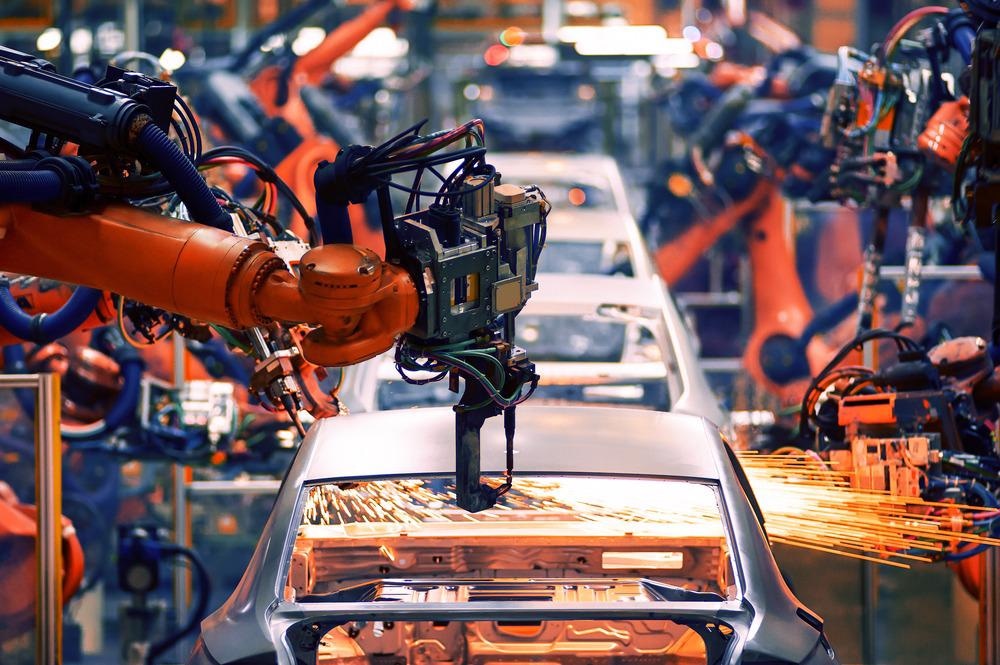Apr 26 2021

Image Credit: Jenson/Shutterstock.com
Semiconductors are one of the most important technological advances of the 20th century and are said to be a significant pillar of the IT industry. Today, they are used in a staggering array of technologies. This article will provide an overview of how semiconductors are used in cars.
Semiconductors – An Overview
A semiconductor has properties that lie somewhere between a conductor (a substance that conducts electricity) and an insulator (a substance that does not conduct electricity.) The main function of a semiconductor is to control an electrical current.
Semiconductors are usually made of pure elements, typically silicon, or compounds such as gallium arsenide or silicon carbide. Properties such as conductivity are altered by doping, which is the introduction of impurities. Doping helps the semiconductor meet the specific needs of the component it is to be installed in. The most common materials used are crystalline solids, but liquid and amorphous semiconductors are also used, albeit in a much smaller capacity.
Semiconductor devices can display a range of useful properties. These include passing current more easily in one direction rather than the other, sensitivity to light or heat, and showing variable resistance. Devices made from semiconductors are used for switching, amplification, and energy conversion due to their modification by doping or by the application of light or electrical fields.
The transistor was invented in 1947, which kick-started research into semiconductors, with the 1956 Nobel Prize in Physics awarded to Shockley, Bardeen, and Brattain for their contribution to research into the field. The semiconductor industry then grew exponentially, and by 1957 it was already worth 100 million dollars.
Since the invention of the integrated chip (IC) in 1967, the semiconductor industry has come into its own, providing an invaluable contribution to the modern world, finding applications in nearly every current technology. Progressively smaller, cheaper, and faster products are created on a regular basis, with the number of transistors in an IC doubling approximately every 18 months.
Common Types of Semiconductor Devic
Semiconductor devices are devices that work according to the principles of semiconductors. There are a wide variety of these devices that can be included in common electronic components. These include:
- Laser diodes
- Light-emitting diodes (LEDs)
- Photocells
- Phototransistors
- Bipolar transistors
- Insulated-gate bipolar transistors (IGBTs)
- Photocouplers
- Thyristors
- Field-effect transistors
- Hall effect sensors (magnetic field sensors)
Semiconductors are used in important components for the IT industry such as memory chips, standard ICs, component-on-a-chip systems, central processing units (CPUs) and graphics processing units (GPUs).
The Use of Semiconductors in the Car Industry
Essentially, cars are increasingly becoming computers on wheels. They now include such elements as heads-up displays, autonomous driving aids, sensors, cell phone and communication integration, and high-performance elements in their engines. This is possible thanks to semiconductors, which are driving innovation in vehicle advancement.
Although the semiconductors used in vehicles represent a small percent of the total semiconductors produced, they comply with specific technical and qualitative requirements. The basis for the suitability of a particular semiconductor in a motor vehicle application is informed by application-specific system definitions and manufacturing consistency. Quality requirements are high.
- Vehicle electrification – Semiconductors have made it possible to replace manual systems with electrical systems. Electrification of key systems provides benefits such as increased vehicle efficiency, reductions in carbon emissions, and minimizing oil dependency.
- Safety and driver assistance – The increasing need for better safety and driver assistance systems in cars has provided a niche for semiconductors. Intelligent functions such as backup cameras, blind-spot detection, adaptive cruise control, lane change assist, airbag deployment, and emergency braking systems are all made possible through the integration of semiconductor technologies.
- Connectivity – Cars are increasingly incorporating technology that improves their connectivity. New vehicles on the market include ever-more sophisticated telematics (long-distance data transmission) and infotainment capabilities which feed drivers information on factors such as road closures, collision avoidance, and even free parking spaces at their destination. On-board computers which handle this information have to process millions of lines of code every second. Semiconductors allow cars to stay connected in real-time.
Semiconductors are key to the future of the electric vehicle (EV) industry as they help to control the powertrain and battery. Semiconductors are also used in the variety of touchscreens that are installed in the driver’s dash and in the back of passenger seats.
Semiconductors – Driving the Future Development of In-car Technology
Semiconductors have evolved over the last few decades to find use in nearly every corner of our everyday lives. As the car industry demands ever-more automation and sophistication, semiconductors will be increasingly incorporated in onboard systems for a wide variety of applications.
With autonomous driving around the corner, increasingly sophisticated semiconductor devices will be a linchpin of the technological advances that make them possible. With the emphasis possibly moving away from the driving experience to the rider experience, there could be a shift to an increasing focus on interiors, comfort, and productivity. Undoubtedly, the semiconductor and automotive industries are traveling a long road together.
Further Reading and More Information
Britannica.com (Website) – Semiconductor [Accessed online 20 April 2021] www.britannica.com/science/semiconductor
Hitachi-hightech.com (Website) – History of Semiconductors [Accessed online 20 April 2021] https://www.hitachi-hightech.com/global/products/device/semiconductor/history.html
Semiconductor Engineering – Semiconductors in Automotive [Accessed 20 April 2021] https://semiengineering.com/semiconductors-in-automotive/
Mbtmag.com (Website) – Semiconductors are Key to the Future of Electric Vehicles [Accessed 20 April 2021] https://www.mbtmag.com/quality-control/article/13247783/semiconductors-are-key-to-the-future-of-electric-vehicles